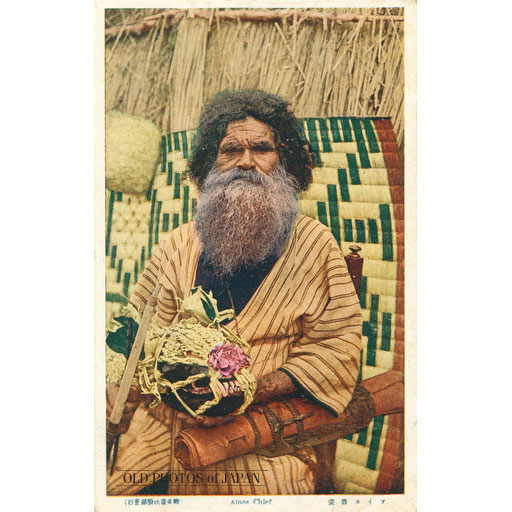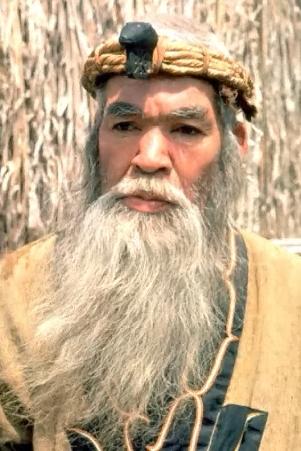
The Ainu people
Ainu chiefs played an important role in their society. Each Ainu village was administered by three hereditary chiefs. Interestingly, they were not allowed to judge criminals. This function was performed by other members of the community.
The Ainu are a distinctive ethnic group which used to have a culture completely different from that of the Japanese. This culture was virtually destroyed during the Meiji Period when policies aimed at assimilating the Ainu into Japanese culture outlawed their language and restricted their activities.
The word Ainu is derived from the word Aynu, which means human. These days some Ainu prefer the term Utari. During the Edo Period they were often referred to as Ezo, Yezo or Emishi. Although the Ainu probably inhabited large areas of Japan, they are now mainly found in Hokkaido.
During the 20th century heated debate raged over the origins of the Ainu. This was finally settled by the mid 1990’s when genetic studies showed that they are “the descendants of Japan’s ancient Jomon inhabitants, mixed with Korean genes of Yayoi colonists and of the modern Japanese.”1

More @ http://oldphotosjapan.com/ja/photos/191/ainu-jp
1 Diamond, Jared (June, 1998). Japanese Roots. Discover Magazine Vol. 19: 86-94.


this is totally amazing and why is it hidden, it must be know all over the world that the black is every where.
If you care to have a very close look and take the time to compare both the Australian Aborigines and the Vedda with the Ainu people, you might see a strong family relationship. I believe that the Australian Aborigine and Vedda are probably genetically identical with the Jomon ancestors. This would support a hypothesis that the first “out of African” modern humans were the ancestors of the Ainu and Aborigines (a group that travelled via a coastal route all the way to South America). These were later supplanted by more recent waves which pushed these people into the more remote outlying areas and islands. DNA comparison would probably prove (or disprove) the link. In addition the Aborigine like ancient skeletal artefacts from Brazil could also link. Another older DNA link could well be discovered with the Tasmanians (who are a different race from Australian Aborigines.)
The first inhabitants of Earth were myelinated people. The muurs and moors originate from Mu the lost continent
They are Moor Descent…just look up MOORS
Do the AINU have an autochthonous word for ELEPANT which would resemble the Slavic SLON, Polish (Slavic variant) SuON, Japanese ZOsaN, Chinese SIONg or SIANg Tibetan GLAN etc??
Chinese S ee AH N g
Hakka (south China) S I O N g
Tocharian A ON K A L A M
Tocharian B ON K O L M O
Latvian Z I L O N us
Saami/Lapp S L O NN
Tibetan G L A N
Slavic (MANY languages!) S L O N
Polish (Slavic variant) S “u” O N
Vietnamese C O N VOI
Mongol Z A A N
Japanese Z O S A N
I would like to send you an entire paper — Petr Jandacek — Los Alamos NM USA
Thanks for visiting us.
Please do send your paper.
I will be in touch with you privately.
Don Jaide
Just let every african know what they came from and iam sure we can settle the world again!
@ridge
Well said!!!